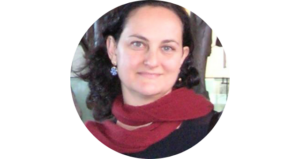
Residency Period: 03/01/2008 to 02/28/2009
Professor Regina Horta Duarte has a degree in History from the Federal University of Minas Gerais (1985), a master’s and a doctorate in History from the State University of Campinas (1988 and 1993, respectively). She is currently a professor at the Federal University of Minas Gerais. She has experience in the area of History, with an emphasis on History of Brazil, Empire and Republic, history and nature, history of biology in the First Republic. She was a member of the board of the Associação Nacional de Historia (aug 2007-jul 2009, national ANPUH), where she acted as editor in charge of the Revista Brasileira de História. She participated in the founding of the Sociedade Latino Americana y Caribeña de Historia Ambiental (SOLCHA), and was elected to the first Board of Directors, 2006-2010, an entity to which she belongs as an effective member. She remains on the Board of Directors of that entity as editor-in-chief of the journal Historia Ambiental Latinoamericana Y Caribeña (HALAC), a scientific publication inaugurated in 2011.
THE NATIONAL MUSEUM AND SCIENTIFIC PRACTICES IN BRAZIL (1911-1945)
The objective of the project is to study the practices of construction and dissemination of knowledge developed at the National Museum between 1911 and 1945, based on the trajectory and activities of three of its most distinguished members: Edgar Roquette-Pinto (1884-1954), Alberto Sampaio (1881-1946) and Cândido de Mello Leitão (1886-1948). It is intended to use the concept of transdisciplinarity to understand the richness of that intellectual environment. Pioneers in separate disciplinary fields (Roquette Pinto and anthropology, Alberto Sampaio and botany, Cândido de Mello Leitão and zoology), they had a much less specific background: they were all former students of the Faculty of Medicine in Rio de Janeiro and started in their specialties through professional practice within the Museum itself.
Over the years, despite the undeniable differences in their political positions, they built a fruitful scientific coexistence, expressed in various activities carried out jointly, whose focus will allow us to debate the shift in concepts between the various disciplines at that specific historical moment. They decisively participated in the activities of Radio Educativa, PRD5, set up in the courtyard of the Institute of Education in 1930, through which they broadcast scientific dissemination programs. Several of his books were part of the Brasiliana Collection, inaugurated in 1931 by Fernando Azevedo, architects of the project of discovering Brazil for Brazilians. They founded the Revista Nacional de Educação in 1932, under the editorship of Roquette-Pinto, financed by the Vargas government, whose ambitious goal was to bring art and science to every home in Brazil. Under the leadership of Roquette-Pinto, they transformed the National Museum into an institution producing educational films (reaching the production mark of more than 250 films), also possessing a spacious cinema room, open to its visitors. In addition, the thematic rooms and the shelves arranged in them received their specific care, becoming true showcases of a Brazil that wanted to be taught to the new school generations, enthusiastically received by the Museum’s researchers. In 1933, the three were the authors of the draft Code of Hunting and Fishing, which aimed to control the destruction of Brazilian fauna, decreed by the government the following year. They actively participated in the organization of the 1st Congress for the Protection of Nature, in 1934, under the leadership of Alberto Sampaio and broad support from the Vargas government.
Thus, the objective is to understand how the constitution of the scientific space at the National Museum was carried out in those years and how the specific knowledge produced by each of these authors was carried out in a dialogue between several areas of knowledge. It is true that, at that time, the disciplines were not clearly defined. But it was certainly already possible to visualize the horizon of its growing delimitation. To cite an example: Cândido de Mello Leitão identified himself and was recognized nationally and internationally as a specialist in arachnids, just as Sampaio was a respected botanist. The participation of these scientists in the most diverse associations, such as the Brazilian Academy of Letters, the Brazilian Academy of Sciences, the National Council of Geography, the Society of Friends of Alberto Torres, among many others, is expressive of this rich ambiguity. The very breadth of the activities undertaken shows the plurality of the network in which their practices were constituted: publishing books, organizing exhibitions and events, organizing scientific journals, founding radio stations and organizing educational programs, pioneering participation in the production of educational films, making the National Museum a truly multimedia space.